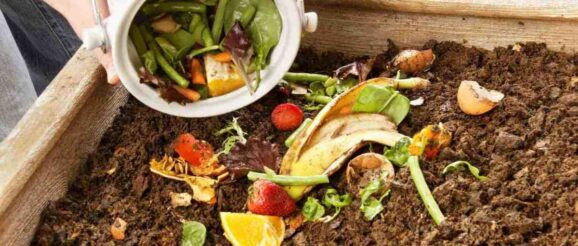Spoon Plus: The Consumer Food Waste Innovation Report

Roughly 1.3 billion tons of edible food worldwide is wasted annually each year, and experts say this number will swell to 2.1 billion tons each year by 2030. These figures have long been known in and out of the food industry, but up until recently, little had been done to curb the problem, which hits every touchpoint in the food supply chain.
Nowadays, governments, grocery retailers, industries like agriculture and grocery, tech companies, and many others are working to fight food waste at both the local and international level. In the developed world, at least, much of that focus over the last 12 months has been on the consumer kitchen, which is responsible for by far the most food waste in those regions.
This report will examine why so much food is wasted in the consumer kitchen, what new technologies and processes can be leveraged to fight that waste, and the companies working to change consumers’ relationship to both food and waste.
Report highlights include:
Companies profiled in this report include LG, Samsung, Vitamix, Smarter, Ovie, Bluapple, Mimica, Blakbear, Silo, Mealhero, MealBoard, Kitchen, No Waste, Ends & Stems, and Olio.
Introduction: The Size of the World’s Food Waste Problem
In 2012, the Natural Resources Defense Council (NRDC) released the first edition of its now-famous report, “Wasted, How America Is Losing Up to 40 Percent of Its Food From Farm to Fork to Landfill.” That report proved to be a groundbreaking look at the inefficiencies in the U.S. food system that lead to massive amounts of food waste from the farm all the way into the average person’s kitchen.
The report also proved to one of the biggest catalysts for change in recent years. Since its publication, the U.S. Department of Agriculture and the U.S. Environmental Protection Agency announced federal targets to cut food waste by 50 percent by 2030 — the first goal of its kind in the U.S. Similarly, the UN’s Sustainable Development Goal (SDG) Target 12.3 seeks to “halve global food waste at retail and consumer levels, as well as to reduce food loss during production and supply.” As NRDC noted in the second edition of “Wasted,” published in 2017, food businesses have made commitments to reduce waste, and 74 percent of consumers polled say fighting food waste is important to them. Most recently, the Consumer Goods Forum launched its Food Waste Coalition that aims, in part, to support SDG 12.3 by focusing on consumer-facing areas of food waste like home and retail. And these are just as sampling of the countless efforts happening on both international and local levels in the war on food waste.
Even so, the oft-cited figure, that one-third of the world’s food supply goes to waste, is as relevant now as it was nearly a decade ago when NRDC first published its report.
In 2020, food waste is a multibillion-dollar problem with environmental, economic, and human costs that grow more urgent as the world advances towards a 10-billion-person population. The United Nations’s Food and Agricultural Organization (FAO) estimates food waste’s global carbon footprint to be 3.3 billion tons of CO2 equivalent of greenhouse gases, and that economic losses of this food waste total $750 billion annually. The United Kingdom’s Food Waste Recycling Action Plan (WRAP) notes that keeping food scraps out of landfills would be the equivalent of removing 20 percent of cars in Britain from the roads. Meanwhile, over in the U.S., rescuing just 15 percent of the food we waste could feed 25 million Americans each year, or well over half of the 40 million Americans facing food insecurity.
Worldwide, different regions waste food in different ways. UN estimates show that per capita waste by consumers in Europe and North America totals to 95-115 kg/year. That number drops significantly, to 6-11 kg/year, in sub-Saharan Africa and South and Southeastern Asia. Overall, 40 percent of losses occur at post-harvest and processing levels in developing countries. Not so in developed nations, where over 40 percent of food waste occurs at retail and consumer levels.
Given the enormous amounts of waste occurring at the consumer level in Europe and North America, it makes sense that recent efforts towards fighting food waste now go towards understanding how and why food gets wasted downstream, at grocery stores, restaurants, and, most importantly, within consumers’ own homes.
The full report is available to subscribers of Spoon Plus. To find out more about Spoon Plus, click here. Use discount code NEWMEMBER to get 15% off an annual or monthly subscription.
Get The Spoon in Your Inbox
